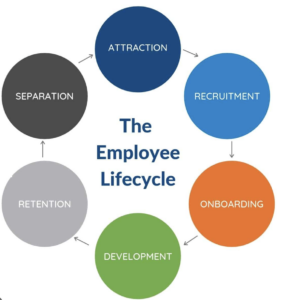In 2019 a Supreme Court ruling (Harpur Trust v Brazel) meant that permanent part-year workers, and irregular hours workers were entitled to 5.6 weeks’ holiday pay, based on their average weekly pay during the weeks they worked (disregarding any periods where no work was done). This meant that in theory, part-year workers would be disproportionately advantaged, when compared with their full-time colleagues.
Before the Conservatives left government in July 2024, they changed the statutory regulations, to allow for irregular hours or part-year workers to have their holiday paid to them on the basis of a 12.07% calculation of their pay received during the pay period. This calculation can be used during any holiday year which starts after 1st April 2024.
The 12.07% calculation is based on the statutory minimum amount of holiday. If contracts provide a more generous holiday allowance, then the percentage must be amended accordingly.
What qualifies as an ‘irregular hours worker’?
The new regulations define irregular hours workers as ‘wholly or mostly variable’ paid hours under the terms of their contract in each pay period. This could mean a casual or zero hours contract, or a contract which states their hours are variable, provided that the reality is that their working hours vary week to week.
What qualifies as a ‘part-year worker’?
A part-year worker is defined as a worker who is only required to work for part of the year, and there must be periods in the year of at least a week during which they are not required to work, and for which they are not paid. These workers may have fixed hours for the times they are working (unlike irregular hours workers).
Practicalities
The changes mean that in one pay period (for example a month, if paid monthly; a week if paid weekly) you can calculate holiday pay based on the relevant percentage calculation (12.07% for statutory minimum holiday) and pay this directly to the worker, provided it’s listed separately as ‘Holiday Pay’ in their payslip. This is now referred to as ‘rolled-up holiday pay’, even though it’s not incorporated in to the worker’s hourly rate.
This means that those workers would not request and take their paid annual leave, as this payment covers their statutory entitlement to holiday, and is on record as having been paid in this way.
Employers can continue to use the current 52-week reference period to calculate holiday entitlement and pay, if the worker takes paid holiday, and the government have provided further guidance on this here.
Here are 2 worked examples:
Employee A is entitled to statutory holiday (5.6 weeks holiday per full year), and they are an irregular hours worker. The company holiday year started on 1st April 2024. Employee A is paid monthly.
In July, Employee A worked a total of 50 hours, on a normal pay rate of £15 per hour. They also worked 8 hours of overtime on x1.5 their hourly rate. Therefore their pay for July is calculated as follows:
50 x £15 = £750
8 x £15 x 1.5 = £180
Employee A’s total pay for July is £930.
In order to calculate Employee A’s holiday pay, this would be 12.07% of their pay for that month. As they are entitled to statutory holiday, you would do the following calculation:
£930 x 12.07% = £112.21
The holiday pay that can therefore be processed for July 2024, with the employee’s normal pay would be £112.21
Employee B is entitled to contractual holiday which totals 6.4 weeks for a full year, based on a full-time entitlement. They are a part-year worker, and the holiday year started on 1st July 2024. Employee B is paid monthly.
In July the employee didn’t work at all. However they worked full-time hours during August, which totalled 165 hours, at a normal pay rate of £20 per hour.
Employee B’s pay for July is zero, therefore they would not be entitled to holiday pay for that month.
However in August their total pay was 165 x £20 = £3,300.
In order to calculate Employee B’s holiday pay, you first need to establish the correct percentage to use. This is calculated as follows:
52 weeks – 6.4 weeks = 45.6.
6.4/45.6 = 14.04
Therefore the correct percentage holiday pay accrual for Employee B is 14.04%
To calculate their holiday pay for August you would therefore do the following calculation:
£3300 x 14.04% = £463.32
The holiday pay that can therefore be processed for August 2024, with the employee’s normal pay would be £463.32
Employers however should be mindful of the details of their worker’s contracts. If they stipulate that the worker is entitled to paid leave, in order to change to rolled-up holiday pay, employers would need to seek the written agreement of the worker in order to make this change to their terms of employment.
If you’re not sure what the changes and new rules means for your staff, get in touch.


Recent Comments